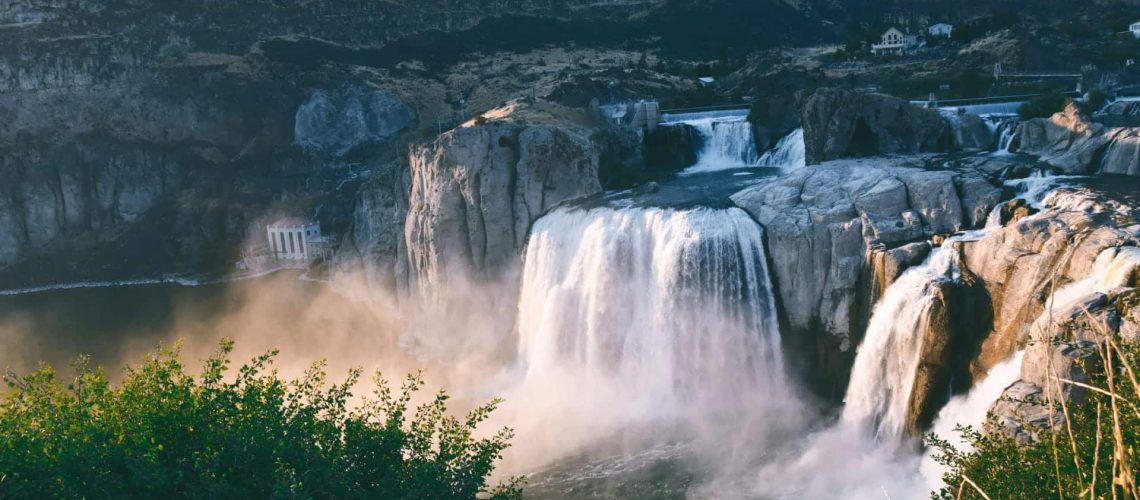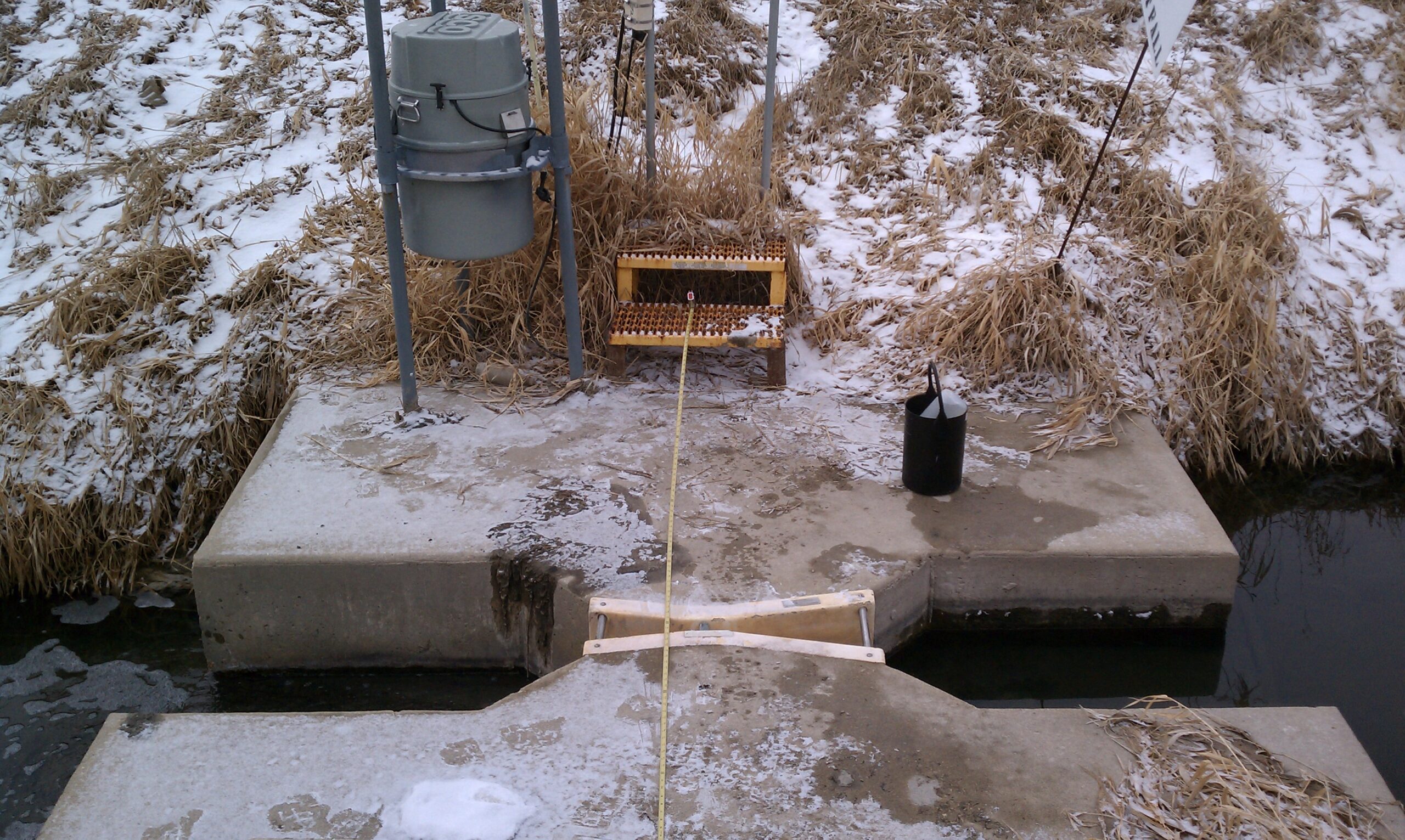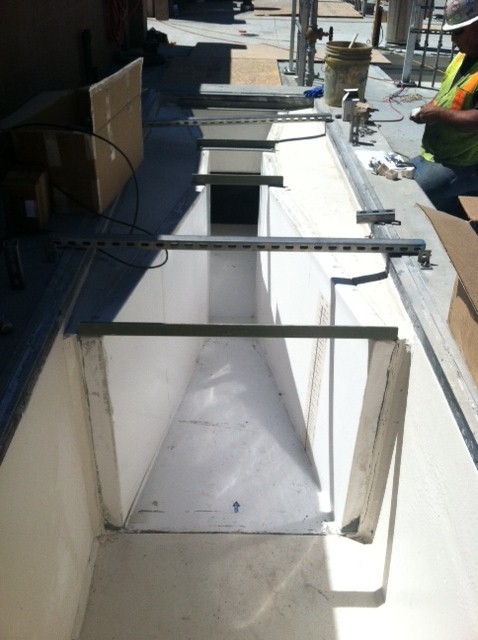The Mountain West region of the United States supplies a lot of people with water, but the region has been experiencing a drought for a while. This long-running drought has led to significant water insecurity throughout the area, which pushes up the costs of water for all the people living there.
The water shortage can even be seen when you look at certain bodies of water in the area. The Lake Mead reservoir, for example, has what’s known as a bathtub ring, which is a visible line around the edge of the lake marking the height of where the water used to be.
Without proper action, millions of people living in the Mountain West region will find themselves dealing with an even larger water shortage, putting their way of life at risk. The waning water levels not only threaten the availability of drinking water, but they impact agricultural production and hydroelectric power production as well.
Given the former power of these waterways and their history of inspiring some of the most widespread flume designs we still use today, the loss of this valuable resource is particularly tragic. Fortunately, there are ways that we can account for this long-running drought, and high-end flume and weir designs could help. Learn all about the Mountain West region’s history of water rights applications and its future.
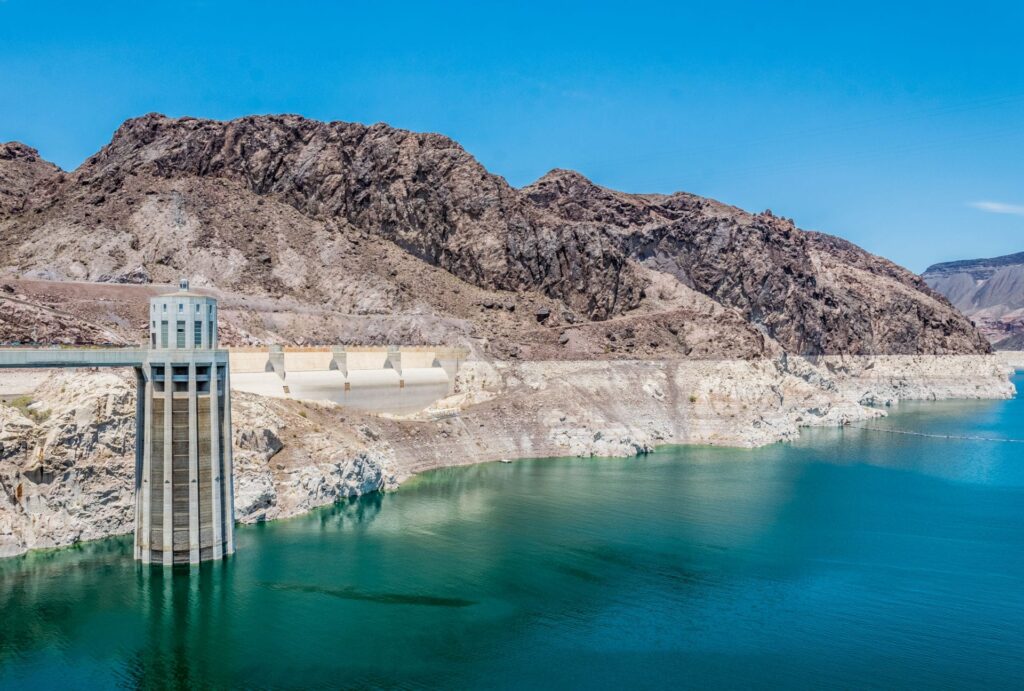
Water Efficiency
Water efficiency is a major concern for various states throughout the Mountain West. States like California, Arizona, Nevada and Colorado are among the top 10 in the country for water conservation planning, with California being No. 1 in the U.S.
Even with their high rankings, however, Nevada and Colorado are still relatively unprepared for more drastic water conservation measures. While this follows a general trend for most states throughout the country, the long-running drought in the Mountain West necessitates a more vigilant approach to protecting the future of water rights.
To help visualize the issue, the Alliance for Water Efficiency utilizes a scorecard ranking when measuring how efficient a state’s water management is. There are 89 total points to earn, with this number representing the highest efficiency possible. Nevada and Colorado earned a score of 43.5 and 42.5 respectively, which is less than half of the possible points they could’ve earned.
For transparency, these ratings do not solely represent how much water is used in a state but rather how well state policies support local actors that provide water to people. Some states with higher populations and larger areas, like California, will naturally use a lot of water, so that can’t be held against them. What matters is how efficiency efforts are supported.
Some significant outliers are present in the Mountain West region as well, which puts their populations at significant risk. Wyoming scores particularly low, with only 5 out of 89 points, which is fairly far from the average 24 points for Utah and New Mexico.
How Efficiency Is Measured
While several factors are considered when measuring water use efficiency, one of the most important pieces of the puzzle is flow rate measurement. The best way to get this information is with a flume device. This is why the Mountain West has been such a popular destination for the development of flume technology. The naturally dry region necessitates that people keep a firmer grasp on how much water is used.
While quite a few different flume styles can get the job done, the Parshall tends to be the most popular. This is because of the extensive amount of research that’s been ongoing for more than a century now. Dr. Robert L. Parshall invented this flume around the turn of the 20th century, and it has since developed equations for a wide range of situations, resistance to sedimentation and resistance to head loss.
Water rights is one of the most common applications of the Parshall flume whether it’s measuring dam seepage, spring discharge, or irrigation runoff. All the research backing the Parshall certainly helps, but it’s especially adept at water rights these days because of the use of fiberglass material in its construction.
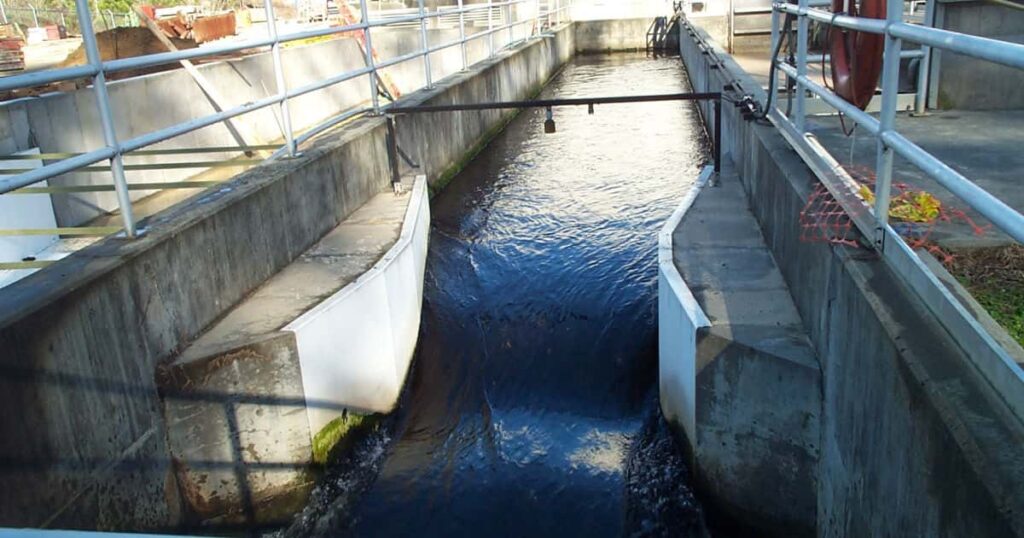
Benefits of Fiberglass
The two main materials used for modern Parshall flumes are fiberglass and galvanized steel. Both can get the job done, but fiberglass has quite a few notable benefits that you may not want to miss out on. Fiberglass flumes are lightweight, meaning it’s much easier to install them compared to heavier galvanized flumes. While fiberglass flumes tend to cost a bit more than galvanized flumes of the same size, the money you save on installation tends to outweigh that difference.
Fiberglass flumes are crafted in a single piece or multiple pieces that are seamlessly connected, ensuring that the flume has a sturdy construction. Plus, the molds can be easily modified, making add-ons and accessories for the flume integrated in such a way that they become part of the structure itself. Adding onto galvanized steel isn’t so easy, and in some cases may be downright impossible.
The Cutthroat Alternative
In addition to Parshall flumes, water rights can also be measured utilizing cutthroat flumes, which are fairly similar to their more common counterpart. A cutthroat flume is essentially a Parshall flume with the throat section removed. This leads to advantages such as easy construction and installation while maintaining reliable equations. Plus, cutthroats have a flat floor, which makes installation much easier.
The cutthroat flume was first developed in the 1960s by a government initiative in the U.S. Department of the Interior’s Office of Water Resources Research. The imagination behind this intuitive design came out of the Utah Water Research Laboratory, making it a Mountain West staple designed specifically for use on flat gradients for both free-flowing and submerged conditions.
Its flat-bottom design comes in handy specifically because of the Parshall flume’s drop in the throat section. This drop is designed to accelerate the flow to reach the point of criticality at the proper point allowing for accurate flow rate measurements. While this certainly comes in handy when applicable, it can be tough to integrate a Parshall flume in flat gradients or places where the upstream or downstream hydraulics can’t be significantly adjusted.
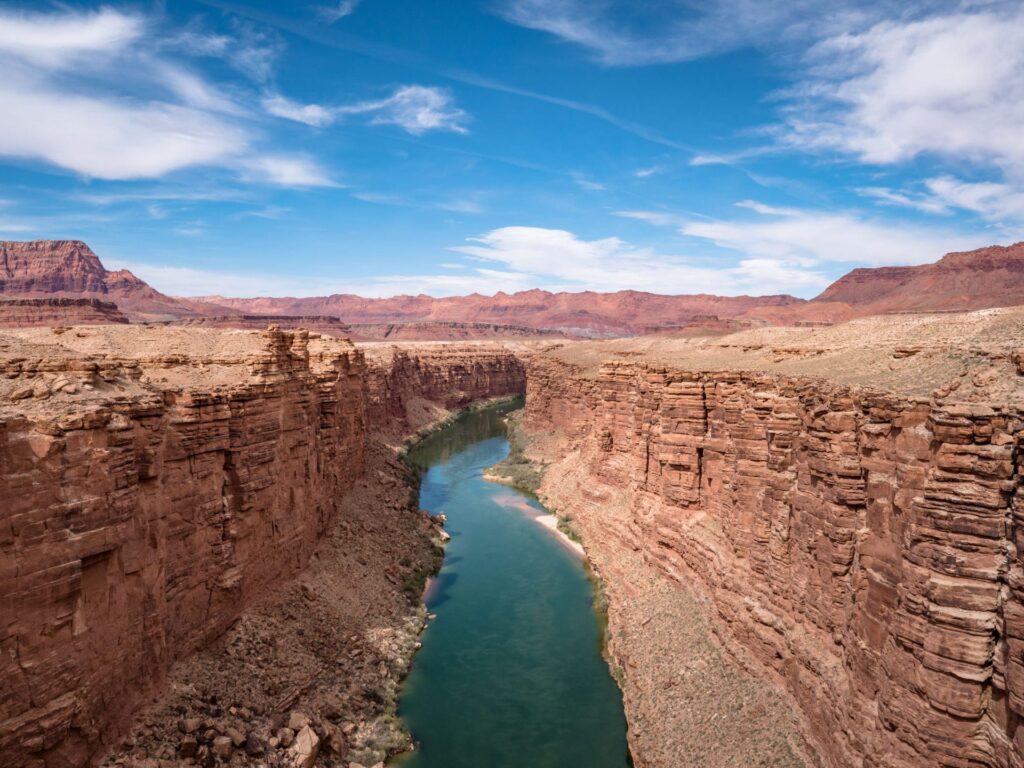
The Colorado River
The mighty Colorado is a lifeline for millions of people in the Mountain West region. It begins as melted snow from the towering peaks of the Rockies flowing down through their meadows and valleys. The river stretches over 1,400 miles and has led the development of the region throughout the last century just as long as the Parshall has been a part of water rights measurement.
Diverting water from the Colorado is a common and well-established practice that is used to irrigate about 5 million acres of farmland from Los Angeles to Denver. Production from that farmland feeds about 40 million people and is the backbone of life in the region.
The long history of use, however, has taken a serious toll on the river, and it’s starting to show serious consequences for the region. Water use is increasing at a rate that the Colorado can no longer sustain. It has become abundantly clear that the Colorado River Compact signed a century ago simply overstated the capacity of the river, which is incidentally something scientists have been warning about for years.
The Burden of Climate Change
As the Colorado River shrinks, the cause of it is plain for anyone to see with the proper data in hand. Temperatures are increasing, and that has a domino effect impacting multiple parts of the environment including the power of the mighty Colorado. Higher temperatures cause trees and plants in the area to need more water to survive, and they don’t hesitate to absorb their fair share from the region. Additionally, any water that’s left on the landscape from the increasingly infrequent rains is evaporating into the air.
As the region gets dryer and dryer, it’s impossible to ignore the root cause of climate change, as it’s the same root cause that has compounded the problem the Mountain West is facing today. For more than a century, people have been trying to seize as much of the area’s water as they possibly can for profit. This isn’t a new revelation. The leader of the 1869 expedition through the Grand Canyon, Wesley Powell, once said, “You are piling up a heritage of conflict and litigation over water rights, for there is not sufficient water to supply these lands.” Scientists reiterated this idea further in 1922 when the Colorado River Compact was signed.
Patching the Holes
While the overall problem is going to take a monumental effort to address, some regions are already making strides toward improving efficiency. California implemented SB 88 in early 2021, which is a legal requirement for all smaller water users to document and report their water usage specifically to the government. To do this, you’ll need a measurement device that’s reliable and easy to use.
Both flumes and weirs can get the job done when it comes to water rights measurements. Finding the right solution to your measurement needs is more a matter of your unique flow conditions rather than any one-size-fits-all solution. It’s important to look at the most important offerings of each to see how they would fit your situation.
Benefits of Flumes
Flumes tend to be cheaper to maintain, as their design makes them largely self-cleaning. This is especially true for styles often used for water rights applications like the Parshall and the cutthroat. They also tend to have low head requirements and pass any debris and sediments quite easily.
Benefits of Weirs
Weirs have a few benefits of their own including the fact that the device itself tends to be cheaper than a flume. The only problem with that is the weir pool aspect, which could be quite costly. Additionally, weirs have simple flow equations, which are less likely to be affected by human calculation errors.
Accuracy
When it comes to compliance with legal requirements, accuracy is typically going to be the top priority. If you’re looking to maximize your accuracy as much as possible, you’ll need to consider how much effort you’re willing to put into your weir. Under laboratory conditions, weirs are more accurate. That’s no secret. When applied in the field, however, the accuracy of a device depends largely on how much maintenance you’re willing to put into it, and maintaining a weir is much more labor-intensive than maintaining a flume.
The Need for Flume Maintenance
Simply using properly rated flumes or weirs for water measurement in an attempt to use water more efficiently in the Mountain West region is only the beginning. You’ll need to have proper maintenance done on your devices to ensure that measurements are accurate. Without having the proper measurements in place, you won’t be able to make reliable decisions on how to make water usage more efficient throughout the region.
Unfortunately, flumes and weirs lack the proper maintenance far too often. This is a phenomenon directly observed by the Utah Water Research Laboratory, which found that two-thirds of the surveyed flumes and weirs did not meet the accuracy requirements for the already-lax legal compliance minimums.
Throughout the Utah Water Research Laboratory’s survey, they found that a fair amount of devices had no Hb measurement whatsoever or had an incorrect Hb measurement. Even worse, however, is that more devices than you’d think didn’t even have a correct Ha measurement. Plus, a fair number of devices were settled or had improper flow approach conditions.
Flumes and Weirs From Tracom
The first step to helping the Mountain West region or avoiding having similar problems is to make sure you’re taking proper measurements of your flow rate using a device you can count on. That’s where Tracom can help. Contact us today for a custom weir or flume device that is specifically suited for your unique flow channel conditions.
Sources:
https://www.latimes.com/environment/story/2023-01-26/colorado-river-in-crisis-the-west-faces-a-water-reckoning
https://www.kunc.org/regional-news/2023-01-26/new-water-efficiency-scorecard-says-much-of-the-mountain-west-isnt-making-the-grade
https://www.theguardian.com/us-news/2022/aug/16/drastic-water-cuts-expected-as-megadrought-grips-western-us-states
https://tracomfrp.com/history-parshall-flume/
https://openstates.org/ca/bills/20212022/SB88/

